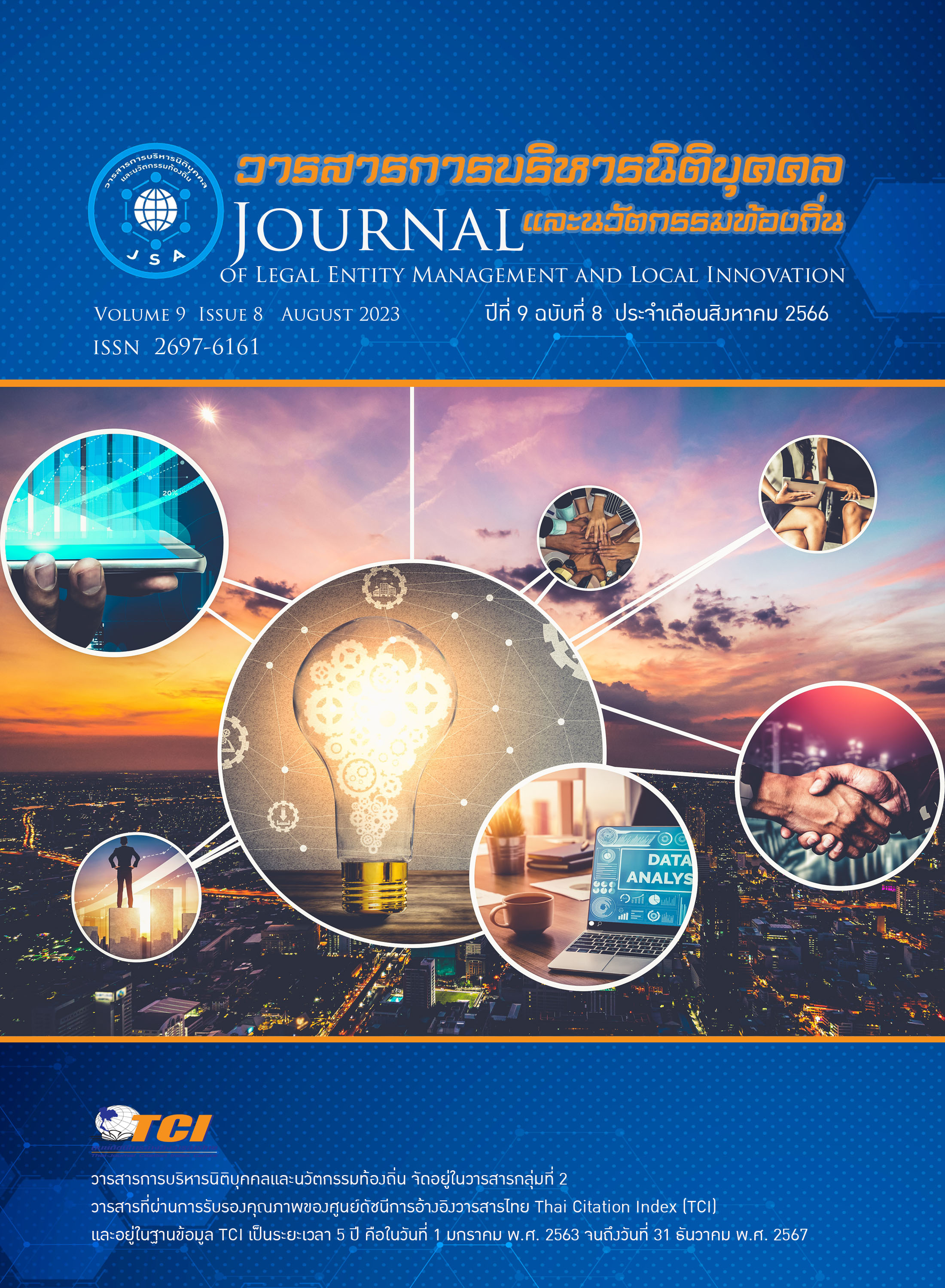การพัฒนาหลักสูตรสังคมศึกษาโดยบูรณาการการสร้างความเป็นพลเมืองในระดับมัธยมศึกษาตอนต้น
คำสำคัญ:
การพัฒนาหลักสูตร, หลักสูตรสังคมศึกษา, การบูรณาการ, การสร้างพลเมืองบทคัดย่อ
การวิจัยครั้งนี้มีวัตถุประสงค์ ดังนี้ 1) เพื่อพัฒนาหลักสูตรกลุ่มสาระการเรียนรู้สังคมศึกษา ศาสนา และวัฒนธรรมโดยบูรณาการการสร้างความเป็นพลเมืองในระดับมัธยมศึกษาตอนต้น 2) เพื่อศึกษาผลการใช้หลักสูตรกลุ่มสาระการเรียนรู้สังคมศึกษา ศาสนา และวัฒนธรรมในระดับมัธยมศึกษาตอนต้นจากการบูรณาการการสร้างความเป็นพลเมือง ประชากร คือ ครูผู้สอนกลุ่มสาระการเรียนรู้สังคมศึกษา ศาสนา และวัฒนธรรม จำนวน 9 คน ผู้เรียนระดับชั้นมัธยมศึกษาปีที่ 1-3 จำนวน 590 คน โรงเรียนสาธิตสถาบันการจัดการปัญญาภิวัฒน์ กลุ่มตัวอย่าง คือ ครูผู้สอนรายวิชาสังคมศึกษาฯ ระดับชั้นมัธยมศึกษาปีที่ 1 จำนวน 3 คน ผู้เรียนระดับชั้นมัธยมศึกษาปีที่ 1/3 จำนวน 31 คน โดยการเลือกระดับชั้นแบบเจาะจง (Purposive Sampling) แล้วสุ่มห้องเรียนอย่างง่าย (Simple Random Sampling) วิเคราะห์ข้อมูลโดยใช้ค่าเฉลี่ยและส่วนเบี่ยงเบนมาตรฐาน ผลการพัฒนาหลักสูตรสังคมศึกษาโดยบูรณาการการสร้างความเป็นพลเมืองในระดับมัธยมศึกษาตอนต้น พบว่า หลักสูตรฯ ที่พัฒนาขึ้นมีส่วนประกอบ ได้แก่ หลักการและเหตุผล กรอบแนวคิด จุดหมายของหลักสูตร สาระและมาตรฐานการเรียนรู้ จุดเน้นความเป็นพลเมือง ตัวชี้วัดและสาระการเรียนรู้โดยบูรณาการการสร้างความเป็นพลเมือง โครงสร้างหลักสูตร คำอธิบายรายวิชา โครงสร้างรายวิชา และแผนการจัดการเรียนรู้ ผลการใช้หลักสูตรฯ พบว่า ผู้เรียนมีผลสัมฤทธิ์ทางการเรียนรายวิชาสังคมศึกษา ค่าเฉลี่ยของคะแนนอยู่ในระดับดี (= 22.74 คะแนน หรือมีค่าร้อยละ 75.80) ความรู้ด้านความเป็นพลเมืองของผู้เรียนมีค่าเฉลี่ยของคะแนนในระดับพอใช้ (
= 12.81 คะแนน หรือมีค่าร้อยละ 64.05) พฤติกรรมความเป็นพลเมืองของผู้เรียนมีค่าเฉลี่ยในระดับดีเยี่ยม (
= 4.58, S.D. = 0.56) และผู้เรียนมีความพึงพอใจในการใช้หลักสูตรอยู่ในระดับมาก (
= 4.15, S.D. = 0.80)
The objectives of this research are as follows: 1) to develop the curriculum for the subject group of Social Studies, Religion, and Culture by integrating civic education in junior high school. 2) to study the outcomes of implementing the curriculum for the subject group of Social Studies, Religion, and Culture in junior high school through the integration of civic education. The population consists of 9 teachers who teach Social Studies, Religion and Culture subject, and 590 students in grades 7-9 at Panyapiwat Institute of Management Demonstration School. The sample group consists of 3 Social Studies, Religion and Culture teachers at the first year of lower secondary education, and 31 students from the 1/3 class of the first year of lower secondary education. The sampling method used is purposive sampling to select specific grade levels and simple random sampling to select classroom, considering that students in each class have different abilities. The data analysis will be conducted using the mean and standard deviation. The components of the curriculum include principles and rationale, conceptual framework, curriculum objectives, content and learning standards, emphasis on civic education, indicators and learning content through civic education integration, curriculum structure, course descriptions and lesson plan. The results of using the social studies curriculum based on the measurement of learning outcomes in the subject, showed that students had an average score at a good level (= 22.74 or 75.80%). The results of measuring knowledge in civic education showed that students had an average score at an acceptable level (
= 12.81 or 64.05%). The results of observing citizenship behavior showed that students had an excellent average score (
= 4.58, S.D. = 0.56). Students expressed a high level of satisfaction with the use of the curriculum (
= 4.15, S.D. = 0.80).


